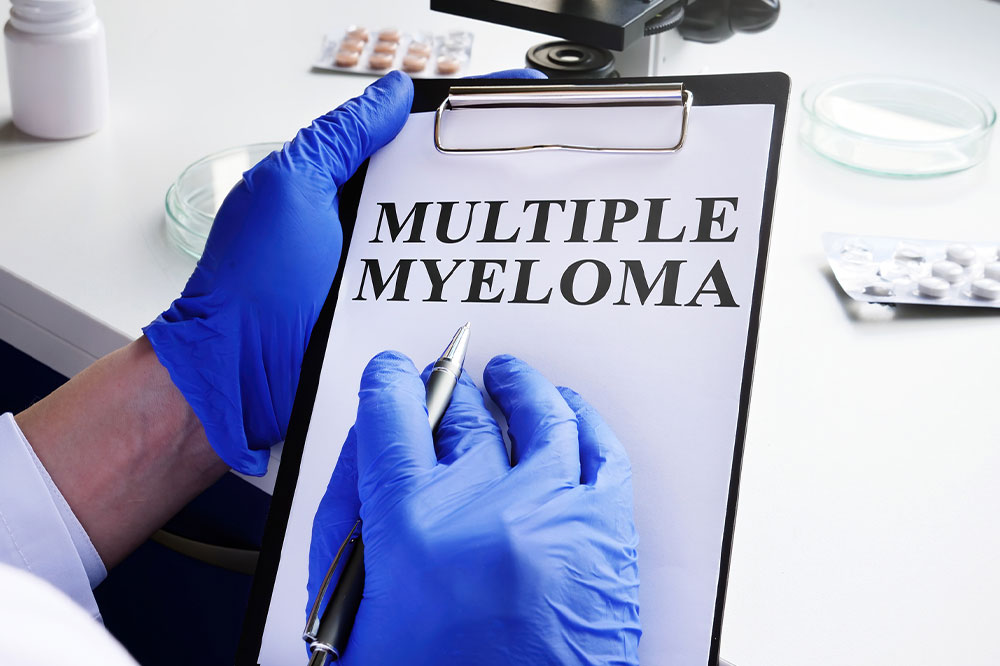
10 warning signs for the onset of multiple myeloma
Multiple myeloma is cancer developing in the plasma cell, a type of white blood cell in the body. Cancerous plasma cells develop in the bone marrow, causing a reduction in healthy cells, and the condition may or may not entail symptoms at the initial stages. Doctors typically recommend blood and urine tests, bone-marrow tests, imaging tests, etc., to diagnose the condition. Here are some early multiple myeloma (MM) warning signs that should not be ignored:
Anemia
Since the cancerous plasma cells multiply rapidly, they may outnumber the healthy cells, including healthy red blood cells in the body, leading to low blood count and anemia. Doctors often recommend the inclusion of iron-rich food in the meal plans of MM patients to increase their blood count. Foods like leafy greens, poultry, eggs, beans, sardines, prunes, dates, and fatty fish can help increase one’s hemoglobin levels and aid overall immunity. To ensure iron absorption, individuals should supplement iron-rich foods with foods high in vitamin C, including citrus fruits, tomatoes, Brussels sprouts, bell peppers, and cruciferous vegetables.
Osteoporosis
The cancerous myeloma cells develop in the bone marrow and can lead to bone brittleness and damage. Such symptoms may result in the onset of osteoporosis, a condition common among patients with MM. Patients with MM may experience excruciating bone pain with any movement or experience pain particularly at night.
Low platelet count
Low platelet count among individuals with MM results from the bone marrow’s inability to produce healthy cells. Many patients with MM suffer from low platelet counts as a result.
Hypercalcemia
Over calcification in the body can result in a condition called hypercalcemia, common in patients with MM due to bone damage. Hypercalcemia may also lead to other health conditions, including blood-chemical imbalance.
Hyperviscosity and blood clotting
Hyperviscosity refers to blood thickening and is prevalent among individuals grappling with MM. Blood thickening leads to the formation of blood clots, which can prevent blood from flowing to different parts of the body, including the arms, legs, and groin.
Kidney problems
Up to 40% of patients with MM suffer from kidney failure due to increased cancerous plasma cells, which produce several antibodies. When released into the blood, these antibodies can trigger serious kidney problems.
Fractures
Patients with MM may suffer from fractures, even with basic or slight movements, owing to bone brittleness. Note that unusual fractures are often a warning sign of MM; a doctor should be consulted immediately in such cases.
Shortness of breath
Shortness of breath or dyspnea is common among MM patients due to the generation of M proteins and cancerous myeloma cells.
Sleep disturbance
Sleep issues, including insomnia, may be caused by different factors, such as bone pain, fractures, deteriorating mental health due to the disease, and side effects of the MM treatment.
Immunodeficiency and infections
Immunodeficiency due to MM can trigger infections, typically leading to side effects of treatments administered to patients.
Besides following the treatment course prescribed by healthcare professionals, individuals with MM must follow certain other measures, such as avoiding high-potassium foods and foods high in salt content, which can aggravate kidney problems, and having fiber-rich foods. Such measures can help control MM symptoms and ensure a better response to treatment.


